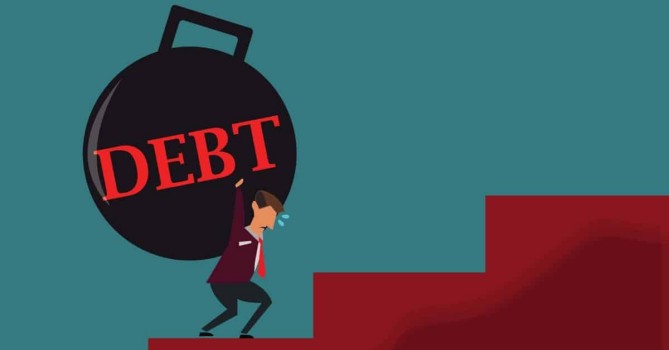Up to this point in our Budgeting Tips series we’ve mostly looked at ways to track expenses, identify priorities, and save money. Until now we haven’t talked much about debt and I believe we should as debt is a big component of many people’s financial lives.
In an earlier tip I mentioned that it’s a good idea to save up for purchases and buy items when we’ve got enough money saved. This is usually a better financial choice than going into debt in order to purchase something. Too many people fall into debt from buying things they don’t need and then struggle to pay off personal loans and credit cards later. At the time, I also mentioned there are exceptions to this rule. It’s usually worthwhile to go into short-term or low-interest debt when purchasing core necessities such as food and shelter.
For example, if I’m hungry now and won’t get paid until next week, I’d absolutely buy food on my credit card and then pay it off with my upcoming paycheque. This is good use of short-term debt, especially if we can pay it off quickly. Many people use mortgages to purchase their homes. This often makes sense for a few reasons. Mortgages tend to be low-interest loans, making them relatively small burden. Shelter, in the form of a house, is a necessity. I’d also argue that most houses can be used as valuable assets in the future, making the use of a long-term, low-interest loan to buy them worthwhile. Sometimes cars fall under this same umbrella. If you need a car to get to work, for instance, getting a low-interest loan to cover the cost of a vehicle so you can earn money is usually worthwhile.
My point is that due to circumstances, long-term life planning, or various other reasons most Canadians go into debt. On average, Canadians carry around $2,000 to $3,000 in credit card debt and many families have mortgages for houses, cars, and other big purchases. Others carry debt due to unfortunate spending habits, secondary education, or because they needed to live on credit between jobs. Whatever the reason, most of us find ourselves in debt at one point or another.
Once we are in debt, how can we best get ourselves back out? There are a few key steps:
- Perhaps the most important step is to make sure we have some money to pay off our debts. We can best do this by tracking our expenses and following the previous budgeting tips on reducing costs. We need to be making more money than we are spending in order to start reducing our debt load. Another way to look at it is we need to not be sinking deeper into debt with more expenses than income.
In short, make sure you’re making more money than you are spending. This allows us to begin tackling debt.
- The next step is to identify which debt to focus on and pay off first. It can take a long time to pay off debts if you’re trying to tackle them all at once. Some people get sucked into trying to pay down their debts evenly, spreading their income across all debts equally, not making a serious dent in any of them. This is one of the more expensive approaches a person can take to pay off debt.
As we’ve discussed before the best approach to paying off debt is to identify the loan with the highest interest rate and start putting as much money as possible toward eliminating that loan. Then, once the first loan is paid off, pick the next debt with the highest interest rate and pay it off next. Meanwhile make only the minimum payments necessary on the lower-interest loans. This will allow you to pay off your debt faster and at a lower cost.
Please note: the minimum payments should still be made on the lower-interest loans to avoid having them go into default or to collectors. Just pay enough on them to keep yourself in good standing and put all remaining available money toward eliminating the highest-interest loan.
The worst order would be to pay off your lowest-interest debt first and work up to the highest.
- Since a debt’s interest rate is a large factor in how costly and how much time it takes to pay down debts, whenever possible consolidate your debt. Having one large line of credit at 6% interest will take a lot less time and money to pay off than three smaller credit cards at 19% to 22% interest. When you can, take out a low-interest line of credit or personal loan and use it to pay off your higher-interest debts. Then work toward paying off the low-interest loan you’ve taken out.
Once debts are paid off, it’s a good idea to build a small cushion of savings to allow you to purchase future items without dipping back into debt.

Comments are closed, but trackbacks and pingbacks are open.